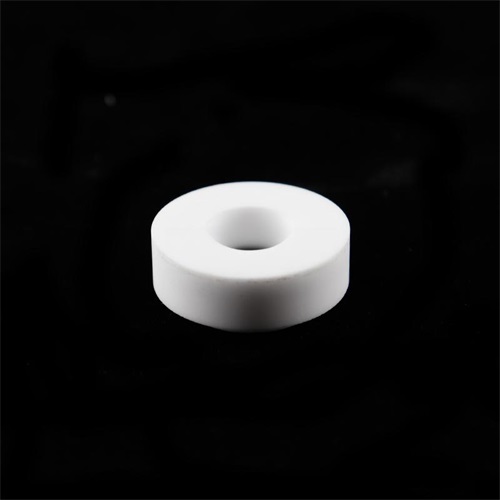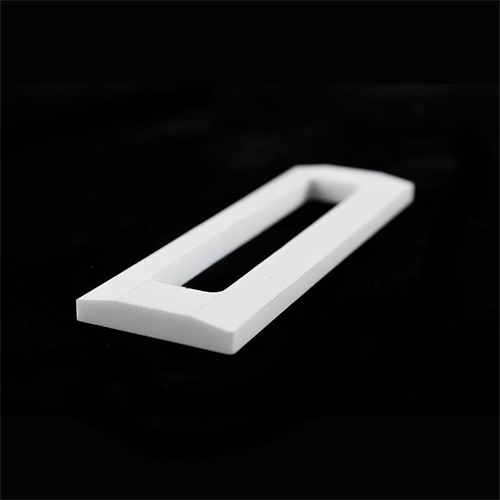What are the applications of alumina ceramics in the electronics industry
Aluminum oxide ceramic (Al ₂ O3 ceramic) is a high-performance ceramic material that has been widely used in the electronics industry due to its excellent insulation, high temperature resistance, mechanical strength, and chemical stability. With the development of electronic devices towards miniaturization, high performance, and high reliability, alumina ceramics have played an important role in solving problems such as heat dissipation, insulation, packaging, and signal transmission.

- Electronic packaging and substrate
(1) Integrated Circuit (IC) Packaging
Aluminum oxide ceramics are widely used in integrated circuit packaging due to their high insulation and low dielectric loss. In high-frequency and high-power electronic devices, traditional plastic packaging may fail due to insufficient heat dissipation or poor dielectric performance, while alumina ceramics can effectively solve the following problems:
-Heat dissipation issue: Alumina ceramics have a high thermal conductivity (about 20-30 W/m · K), which can help the chip dissipate heat quickly and improve device stability.
-Insulation protection: Its high resistivity (>10 ¹⁴Ω· cm) can prevent current leakage and ensure the reliability of signal transmission.
-High temperature resistance: able to withstand high temperature welding processes (such as eutectic welding and brazing), suitable for high-power device packaging.
(2) Multilayer ceramic substrates (such as LTCC, HTCC)
In high-end electronic devices such as 5G communication and aerospace, multi-layer ceramic substrates (LTCC/HTCC) are used for high-density circuit integration. The advantages of alumina ceramics include:
-High mechanical strength: supports multi-layer wiring structures and reduces the risk of substrate deformation.
-Low thermal expansion coefficient (~7 × 10 ⁻⁶/° C), matched with silicon chips, reduces failure caused by thermal stress.
-Chemical stability: corrosion-resistant, suitable for harsh environments. - Electronic components
(1) Resistors and capacitors
Aluminum oxide ceramics are used as substrates or dielectric materials for manufacturing thick film/thin film resistors, high-voltage capacitors, etc. Their functions include:
-High dielectric strength (>10 kV/mm), suitable for high-voltage capacitors.
-Low dielectric loss reduces high-frequency signal attenuation.
(2) Sensors
In temperature and pressure sensors, the high temperature resistance and insulation properties of alumina ceramics make it an ideal material:
-Thermal stability: Can work for a long time in high temperature environments (such as car engines).
-Chemical inertness: resistant to acid and alkali corrosion, suitable for industrial sensors. - Heat dissipation and thermal management
(1) Heat dissipation substrate (such as LED heat sink)
High power LEDs and power electronic devices (such as IGBTs) require efficient heat dissipation, and the application advantages of alumina ceramics are:
-High thermal conductivity: superior to most plastics and metal oxides, improving heat dissipation efficiency.
-Electrical insulation: can directly contact the circuit to avoid the risk of short circuit.
(2) Heat sink material
In laser diodes and RF modules, aluminum oxide ceramic heat sinks can quickly dissipate heat and prevent device overheating and failure. - High frequency and microwave devices
In 5G communication and radar systems, alumina ceramics are used for:
-Microwave dielectric resonator: improves signal transmission efficiency.
-RF packaging: reduces signal interference and improves high-frequency performance. - Vacuum electronic devices
In vacuum devices such as electronic tubes and X-ray tubes, alumina ceramics are used for:
-High vacuum sealing: Excellent airtightness, preventing gas penetration.
-Resistance to electron bombardment: Stable operation in high-energy electronic environments. - Other applications
-Insulators: Insulation supports used in high-voltage transmission and power electronics.
-Electronic paste: Ceramic substrate used for printed circuits (such as silver paste conductive lines).

Alumina ceramics are widely used in the electronics industry, mainly solving key problems such as heat dissipation, insulation, high-frequency signal transmission, high temperature resistance, and chemical stability. With the development of electronic technology towards higher frequencies and greater power, alumina ceramics will continue to play an important role in fields such as semiconductor packaging, 5G communication, and new energy vehicles.
Brudeze Ceramics supplies and sells a wide range of high-quality quartz glass, including alumina ceramics, zirconia ceramics, silicon nitride ceramics, aluminum nitride ceramics, silicon carbide ceramics, boron carbide ceramics, bioceramics, machinable ceramics, etc. We can meet the customization requirements of various ceramic products.
PREVIOUS:What are the biomedical applications of alumina ceramics
NEXT:What are the applications of alumina ceramics in automotive components
CATEGORIES
LATEST NEWS
- Petrochemical ceramic injec...
- Zirconia Ceramic Rod Custom...
- High-temperature resistance...
- What is the wear resistance...
- What is the hardness of cer...
- Aluminum oxide ceramic cust...
- What are the main aspects o...
- What are the mechanical pro...
- Thermal properties of zirco...
- What properties should be c...
